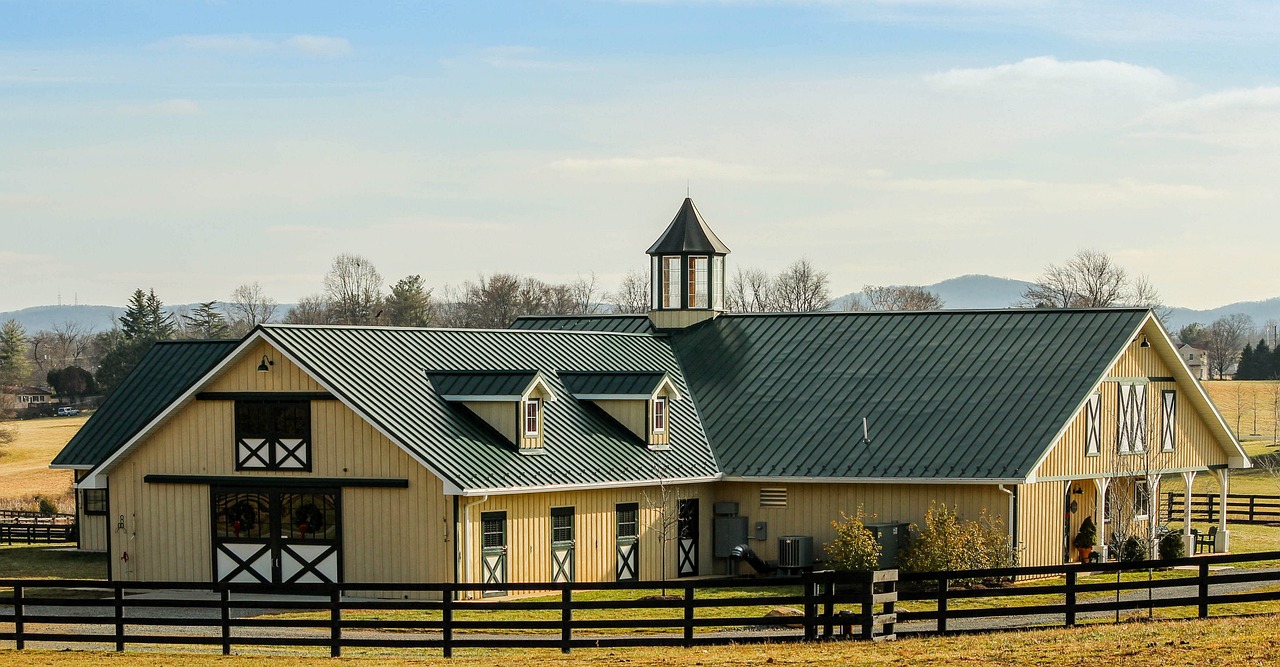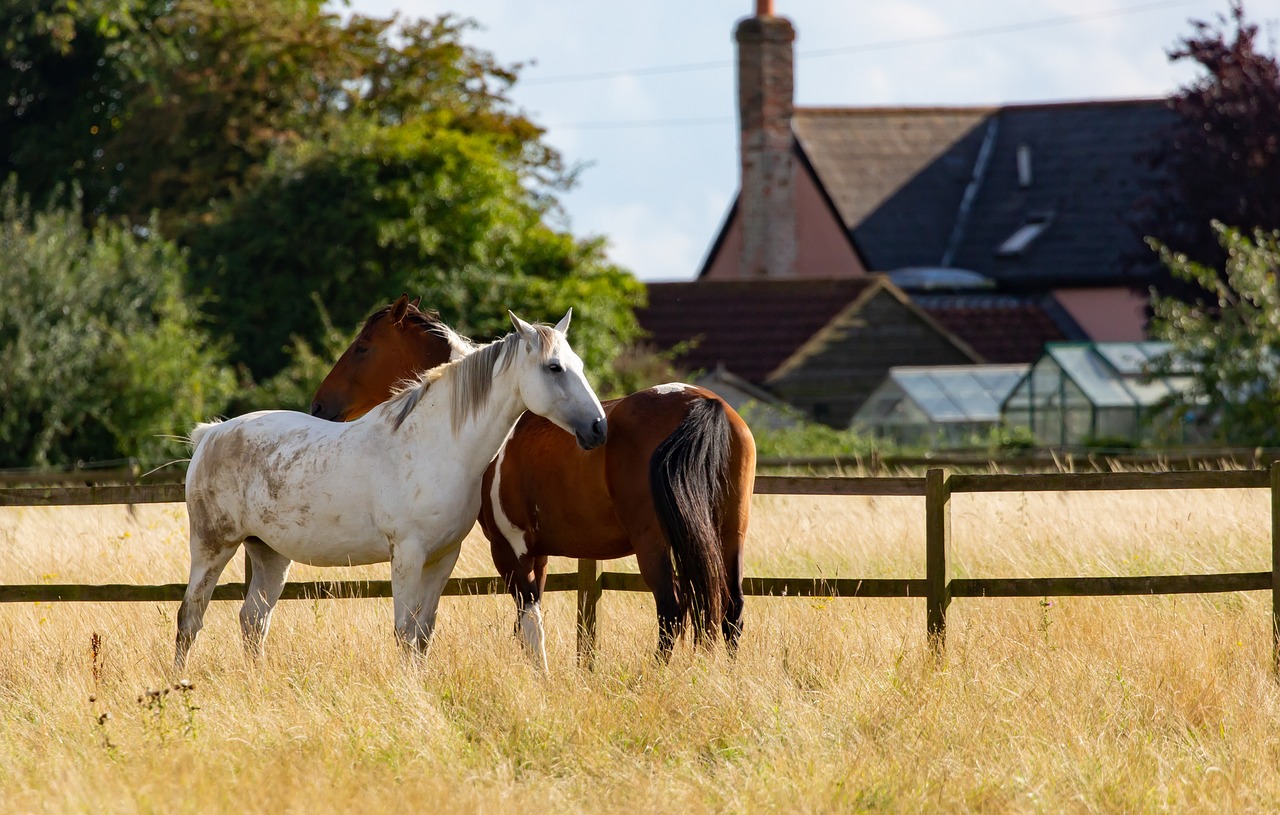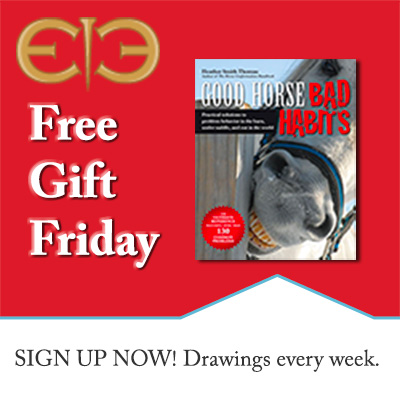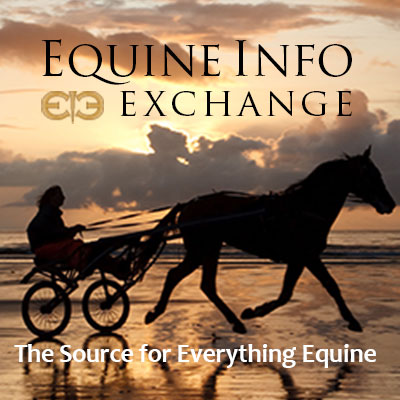Recreation & Lifestyle
Welcome to Recreation & Lifestyle, which includes leisure riding and other aspects of the equestrian lifestyle for you and your horse loving friends and family.
Looking for the perfect present? See the Gifts & Jewelry section. Redecorating? Find a Painting, Photograph or Sculpture in the Artwork section. Need to check out a movie or crawl up with a good book or magazine? See our Entertainment section where you will find and Books, Movies, Games, and Magazines. And don't forget about Fine Art in some specialty Museums that might surprise you.
Looking for love or a trail buddy? Riding Partners is the spot to seek other riders who share your passion. Find a place to ride with that special person in our Trail Riding section and if you need more time away, take a look at Vacations. Want to know about the next horse show or special event? Don’t miss it! Dates and locations are included in the Calendar of Events for Recreation & Lifestyle.
Do we need to add more? Please use the useful feedback link and let us know!

Purchasing a horse farm or an equestrian center can be a very exciting yet overwhelming venture. It is far more complex than buying a home since many factors need to be considered for the best care and safety for your horses. When looking at equestrian real estate, it is important to consider the following factors.
Land
The amount and quality of land is one of the most important factors to consider when buying equestrian real estate. You will need enough land to accommodate your horses, as well as any other buildings or facilities that you plan to have on the property. The land should also be suitable for horses, meaning that it should be well-drained and have good footing.
Facilities
The type and condition of the facilities on the property are also important to consider. Do you need a barn, stalls, wash racks, tack rooms, or any other facilities? Are the existing facilities in good condition?
Location
The location of the property is also important. Do you want to be close to other equestrian facilities, such as riding trails, showgrounds, or veterinary clinics? Do you want to be in a rural area or a more suburban or urban area?
Test the Water, Test the Soil
Good water is key to good health. Check if there is an ample water supply and find out if there are water sharing rights.
Horses are greatly impacted by the quality of land. When you test soil, look for things such as alkaline, acidity, and salt levels. You’ll also need to look for signs of bad pesticides or herbicides. Even if sprayed years ago, they can still impact the soil today. When horses are grazing, they take in bits of soil along with the grass. If there are not enough nutrients or if the soil has pesticides, your horses are going to suffer. Tell the laboratory that you’re raising horses, not food crops. Horses and crops need different nutrients to be their best. Land that is good for crops may not be good for your horses.
Budget
Equestrian real estate can be expensive, so it is important to set a realistic budget before you start shopping. Keep in mind that you will also need to factor in the cost of maintaining the property and caring for your horses.
Financial Commitment
Horses are expensive animals to keep. You'll need to factor in the cost of bedding and feed, farrier services, veterinary care, stabling or boarding fees, deworming, vaccinations, and other miscellaneous expenses. You may also choose to insure your horse which is an additional cost.
Time Commitment
Horses are social animals that require regular handling and attention. You'll need to spend time each day feeding, watering, cleaning their stall, grooming, and exercising them. Even if you board your horse at a stable, you'll still need to factor in travel time to and from the barn.
Finding Suitable Housing
Horses need a safe and secure place to live. You'll either need to have enough property to provide them with pasture and shelter, or you'll need to board them at a stable. Boarding fees can vary depending on the location and amenities offered. Here's a Boarding Checklist to help you in your search. Likewise, if you plan on having grooms or caretakers live on your property to look after your horses and farm, ensure that there is adequate staff housing available.
Know Your Neighbors
Owning a horse can be a challenging but rewarding experience. It's important to have a support system in place, such as a trainer, a farrier, a veterinarian, and other horse owners. These people can provide you with guidance, support, and friendship.
Get to know your neighbors. When you find that perfect piece of land, go introduce yourself. These are the people that know about the land, the weather, and what to do in emergencies. Find out what they do with their farmland, any problems they have, and let them know what you’re thinking of doing with your own potential property.
Keeping all of these in mind, owning a horse can be an incredibly fulfilling and rewarding relationship for many years, so treasure every moment!
Equestrian Real Estate in Colorado
You can find more interesting stories in our section on Recreation & Lifestyle.

Purchasing a horse farm or an equestrian center can be a very exciting yet overwhelming venture. It is far more complex than buying a home since many factors need to be considered for the best care and safety for your horses. When looking at equestrian real estate, it is important to consider the following factors.
Land
The amount and quality of land is one of the most important factors to consider when buying equestrian real estate. You will need enough land to accommodate your horses, as well as any other buildings or facilities that you plan to have on the property. The land should also be suitable for horses, meaning that it should be well-drained and have good footing.
Facilities
The type and condition of the facilities on the property are also important to consider. Do you need a barn, stalls, wash racks, tack rooms, or any other facilities? Are the existing facilities in good condition?
Location
The location of the property is also important. Do you want to be close to other equestrian facilities, such as riding trails, showgrounds, or veterinary clinics? Do you want to be in a rural area or a more suburban or urban area?
Test the Water, Test the Soil
Good water is key to good health. Check if there is an ample water supply and find out if there are water sharing rights.
Horses are greatly impacted by the quality of land. When you test soil, look for things such as alkaline, acidity, and salt levels. You’ll also need to look for signs of bad pesticides or herbicides. Even if sprayed years ago, they can still impact the soil today. When horses are grazing, they take in bits of soil along with the grass. If there are not enough nutrients or if the soil has pesticides, your horses are going to suffer. Tell the laboratory that you’re raising horses, not food crops. Horses and crops need different nutrients to be their best. Land that is good for crops may not be good for your horses.
Budget
Equestrian real estate can be expensive, so it is important to set a realistic budget before you start shopping. Keep in mind that you will also need to factor in the cost of maintaining the property and caring for your horses.
Financial Commitment
Horses are expensive animals to keep. You'll need to factor in the cost of bedding and feed, farrier services, veterinary care, stabling or boarding fees, deworming, vaccinations, and other miscellaneous expenses. You may also choose to insure your horse which is an additional cost.
Time Commitment
Horses are social animals that require regular handling and attention. You'll need to spend time each day feeding, watering, cleaning their stall, grooming, and exercising them. Even if you board your horse at a stable, you'll still need to factor in travel time to and from the barn.
Finding Suitable Housing
Horses need a safe and secure place to live. You'll either need to have enough property to provide them with pasture and shelter, or you'll need to board them at a stable. Boarding fees can vary depending on the location and amenities offered. Here's a Boarding Checklist to help you in your search. Likewise, if you plan on having grooms or caretakers live on your property to look after your horses and farm, ensure that there is adequate staff housing available.
Know Your Neighbors
Owning a horse can be a challenging but rewarding experience. It's important to have a support system in place, such as a trainer, a farrier, a veterinarian, and other horse owners. These people can provide you with guidance, support, and friendship.
Get to know your neighbors. When you find that perfect piece of land, go introduce yourself. These are the people that know about the land, the weather, and what to do in emergencies. Find out what they do with their farmland, any problems they have, and let them know what you’re thinking of doing with your own potential property.
Keeping all of these in mind, owning a horse can be an incredibly fulfilling and rewarding relationship for many years, so treasure every moment!
Equestrian Real Estate in Connecticut
You can find more interesting stories in our section on Recreation & Lifestyle.

Purchasing a horse farm or an equestrian center can be a very exciting yet overwhelming venture. It is far more complex than buying a home since many factors need to be considered for the best care and safety for your horses. When looking at equestrian real estate, it is important to consider the following factors.
Land
The amount and quality of land is one of the most important factors to consider when buying equestrian real estate. You will need enough land to accommodate your horses, as well as any other buildings or facilities that you plan to have on the property. The land should also be suitable for horses, meaning that it should be well-drained and have good footing.
Facilities
The type and condition of the facilities on the property are also important to consider. Do you need a barn, stalls, wash racks, tack rooms, or any other facilities? Are the existing facilities in good condition?
Location
The location of the property is also important. Do you want to be close to other equestrian facilities, such as riding trails, showgrounds, or veterinary clinics? Do you want to be in a rural area or a more suburban or urban area?
Test the Water, Test the Soil
Good water is key to good health. Check if there is an ample water supply and find out if there are water sharing rights.
Horses are greatly impacted by the quality of land. When you test soil, look for things such as alkaline, acidity, and salt levels. You’ll also need to look for signs of bad pesticides or herbicides. Even if sprayed years ago, they can still impact the soil today. When horses are grazing, they take in bits of soil along with the grass. If there are not enough nutrients or if the soil has pesticides, your horses are going to suffer. Tell the laboratory that you’re raising horses, not food crops. Horses and crops need different nutrients to be their best. Land that is good for crops may not be good for your horses.
Budget
Equestrian real estate can be expensive, so it is important to set a realistic budget before you start shopping. Keep in mind that you will also need to factor in the cost of maintaining the property and caring for your horses.
Financial Commitment
Horses are expensive animals to keep. You'll need to factor in the cost of bedding and feed, farrier services, veterinary care, stabling or boarding fees, deworming, vaccinations, and other miscellaneous expenses. You may also choose to insure your horse which is an additional cost.
Time Commitment
Horses are social animals that require regular handling and attention. You'll need to spend time each day feeding, watering, cleaning their stall, grooming, and exercising them. Even if you board your horse at a stable, you'll still need to factor in travel time to and from the barn.
Finding Suitable Housing
Horses need a safe and secure place to live. You'll either need to have enough property to provide them with pasture and shelter, or you'll need to board them at a stable. Boarding fees can vary depending on the location and amenities offered. Here's a Boarding Checklist to help you in your search. Likewise, if you plan on having grooms or caretakers live on your property to look after your horses and farm, ensure that there is adequate staff housing available.
Know Your Neighbors
Owning a horse can be a challenging but rewarding experience. It's important to have a support system in place, such as a trainer, a farrier, a veterinarian, and other horse owners. These people can provide you with guidance, support, and friendship.
Get to know your neighbors. When you find that perfect piece of land, go introduce yourself. These are the people that know about the land, the weather, and what to do in emergencies. Find out what they do with their farmland, any problems they have, and let them know what you’re thinking of doing with your own potential property.
Keeping all of these in mind, owning a horse can be an incredibly fulfilling and rewarding relationship for many years, so treasure every moment!
Equestrian Real Estate in Florida
You can find more interesting stories in our section on Recreation & Lifestyle.

Purchasing a horse farm or an equestrian center can be a very exciting yet overwhelming venture. It is far more complex than buying a home since many factors need to be considered for the best care and safety for your horses. When looking at equestrian real estate, it is important to consider the following factors.
Land
The amount and quality of land is one of the most important factors to consider when buying equestrian real estate. You will need enough land to accommodate your horses, as well as any other buildings or facilities that you plan to have on the property. The land should also be suitable for horses, meaning that it should be well-drained and have good footing.
Facilities
The type and condition of the facilities on the property are also important to consider. Do you need a barn, stalls, wash racks, tack rooms, or any other facilities? Are the existing facilities in good condition?
Location
The location of the property is also important. Do you want to be close to other equestrian facilities, such as riding trails, showgrounds, or veterinary clinics? Do you want to be in a rural area or a more suburban or urban area?
Test the Water, Test the Soil
Good water is key to good health. Check if there is an ample water supply and find out if there are water sharing rights.
Horses are greatly impacted by the quality of land. When you test soil, look for things such as alkaline, acidity, and salt levels. You’ll also need to look for signs of bad pesticides or herbicides. Even if sprayed years ago, they can still impact the soil today. When horses are grazing, they take in bits of soil along with the grass. If there are not enough nutrients or if the soil has pesticides, your horses are going to suffer. Tell the laboratory that you’re raising horses, not food crops. Horses and crops need different nutrients to be their best. Land that is good for crops may not be good for your horses.
Budget
Equestrian real estate can be expensive, so it is important to set a realistic budget before you start shopping. Keep in mind that you will also need to factor in the cost of maintaining the property and caring for your horses.
Financial Commitment
Horses are expensive animals to keep. You'll need to factor in the cost of bedding and feed, farrier services, veterinary care, stabling or boarding fees, deworming, vaccinations, and other miscellaneous expenses. You may also choose to insure your horse which is an additional cost.
Time Commitment
Horses are social animals that require regular handling and attention. You'll need to spend time each day feeding, watering, cleaning their stall, grooming, and exercising them. Even if you board your horse at a stable, you'll still need to factor in travel time to and from the barn.
Finding Suitable Housing
Horses need a safe and secure place to live. You'll either need to have enough property to provide them with pasture and shelter, or you'll need to board them at a stable. Boarding fees can vary depending on the location and amenities offered. Here's a Boarding Checklist to help you in your search. Likewise, if you plan on having grooms or caretakers live on your property to look after your horses and farm, ensure that there is adequate staff housing available.
Know Your Neighbors
Owning a horse can be a challenging but rewarding experience. It's important to have a support system in place, such as a trainer, a farrier, a veterinarian, and other horse owners. These people can provide you with guidance, support, and friendship.
Get to know your neighbors. When you find that perfect piece of land, go introduce yourself. These are the people that know about the land, the weather, and what to do in emergencies. Find out what they do with their farmland, any problems they have, and let them know what you’re thinking of doing with your own potential property.
Keeping all of these in mind, owning a horse can be an incredibly fulfilling and rewarding relationship for many years, so treasure every moment!
Equestrian Real Estate in Kentucky
You can find more interesting stories in our section on Recreation & Lifestyle.

Purchasing a horse farm or an equestrian center can be a very exciting yet overwhelming venture. It is far more complex than buying a home since many factors need to be considered for the best care and safety for your horses. When looking at equestrian real estate, it is important to consider the following factors.
Land
The amount and quality of land is one of the most important factors to consider when buying equestrian real estate. You will need enough land to accommodate your horses, as well as any other buildings or facilities that you plan to have on the property. The land should also be suitable for horses, meaning that it should be well-drained and have good footing.
Facilities
The type and condition of the facilities on the property are also important to consider. Do you need a barn, stalls, wash racks, tack rooms, or any other facilities? Are the existing facilities in good condition?
Location
The location of the property is also important. Do you want to be close to other equestrian facilities, such as riding trails, showgrounds, or veterinary clinics? Do you want to be in a rural area or a more suburban or urban area?
Test the Water, Test the Soil
Good water is key to good health. Check if there is an ample water supply and find out if there are water sharing rights.
Horses are greatly impacted by the quality of land. When you test soil, look for things such as alkaline, acidity, and salt levels. You’ll also need to look for signs of bad pesticides or herbicides. Even if sprayed years ago, they can still impact the soil today. When horses are grazing, they take in bits of soil along with the grass. If there are not enough nutrients or if the soil has pesticides, your horses are going to suffer. Tell the laboratory that you’re raising horses, not food crops. Horses and crops need different nutrients to be their best. Land that is good for crops may not be good for your horses.
Budget
Equestrian real estate can be expensive, so it is important to set a realistic budget before you start shopping. Keep in mind that you will also need to factor in the cost of maintaining the property and caring for your horses.
Financial Commitment
Horses are expensive animals to keep. You'll need to factor in the cost of bedding and feed, farrier services, veterinary care, stabling or boarding fees, deworming, vaccinations, and other miscellaneous expenses. You may also choose to insure your horse which is an additional cost.
Time Commitment
Horses are social animals that require regular handling and attention. You'll need to spend time each day feeding, watering, cleaning their stall, grooming, and exercising them. Even if you board your horse at a stable, you'll still need to factor in travel time to and from the barn.
Finding Suitable Housing
Horses need a safe and secure place to live. You'll either need to have enough property to provide them with pasture and shelter, or you'll need to board them at a stable. Boarding fees can vary depending on the location and amenities offered. Here's a Boarding Checklist to help you in your search. Likewise, if you plan on having grooms or caretakers live on your property to look after your horses and farm, ensure that there is adequate staff housing available.
Know Your Neighbors
Owning a horse can be a challenging but rewarding experience. It's important to have a support system in place, such as a trainer, a farrier, a veterinarian, and other horse owners. These people can provide you with guidance, support, and friendship.
Get to know your neighbors. When you find that perfect piece of land, go introduce yourself. These are the people that know about the land, the weather, and what to do in emergencies. Find out what they do with their farmland, any problems they have, and let them know what you’re thinking of doing with your own potential property.
Keeping all of these in mind, owning a horse can be an incredibly fulfilling and rewarding relationship for many years, so treasure every moment!
Equestrian Real Estate in Maine
You can find more interesting stories in our section on Recreation & Lifestyle.

Purchasing a horse farm or an equestrian center can be a very exciting yet overwhelming venture. It is far more complex than buying a home since many factors need to be considered for the best care and safety for your horses. When looking at equestrian real estate, it is important to consider the following factors.
Land
The amount and quality of land is one of the most important factors to consider when buying equestrian real estate. You will need enough land to accommodate your horses, as well as any other buildings or facilities that you plan to have on the property. The land should also be suitable for horses, meaning that it should be well-drained and have good footing.
Facilities
The type and condition of the facilities on the property are also important to consider. Do you need a barn, stalls, wash racks, tack rooms, or any other facilities? Are the existing facilities in good condition?
Location
The location of the property is also important. Do you want to be close to other equestrian facilities, such as riding trails, showgrounds, or veterinary clinics? Do you want to be in a rural area or a more suburban or urban area?
Test the Water, Test the Soil
Good water is key to good health. Check if there is an ample water supply and find out if there are water sharing rights.
Horses are greatly impacted by the quality of land. When you test soil, look for things such as alkaline, acidity, and salt levels. You’ll also need to look for signs of bad pesticides or herbicides. Even if sprayed years ago, they can still impact the soil today. When horses are grazing, they take in bits of soil along with the grass. If there are not enough nutrients or if the soil has pesticides, your horses are going to suffer. Tell the laboratory that you’re raising horses, not food crops. Horses and crops need different nutrients to be their best. Land that is good for crops may not be good for your horses.
Budget
Equestrian real estate can be expensive, so it is important to set a realistic budget before you start shopping. Keep in mind that you will also need to factor in the cost of maintaining the property and caring for your horses.
Financial Commitment
Horses are expensive animals to keep. You'll need to factor in the cost of bedding and feed, farrier services, veterinary care, stabling or boarding fees, deworming, vaccinations, and other miscellaneous expenses. You may also choose to insure your horse which is an additional cost.
Time Commitment
Horses are social animals that require regular handling and attention. You'll need to spend time each day feeding, watering, cleaning their stall, grooming, and exercising them. Even if you board your horse at a stable, you'll still need to factor in travel time to and from the barn.
Finding Suitable Housing
Horses need a safe and secure place to live. You'll either need to have enough property to provide them with pasture and shelter, or you'll need to board them at a stable. Boarding fees can vary depending on the location and amenities offered. Here's a Boarding Checklist to help you in your search. Likewise, if you plan on having grooms or caretakers live on your property to look after your horses and farm, ensure that there is adequate staff housing available.
Know Your Neighbors
Owning a horse can be a challenging but rewarding experience. It's important to have a support system in place, such as a trainer, a farrier, a veterinarian, and other horse owners. These people can provide you with guidance, support, and friendship.
Get to know your neighbors. When you find that perfect piece of land, go introduce yourself. These are the people that know about the land, the weather, and what to do in emergencies. Find out what they do with their farmland, any problems they have, and let them know what you’re thinking of doing with your own potential property.
Keeping all of these in mind, owning a horse can be an incredibly fulfilling and rewarding relationship for many years, so treasure every moment!
Equestrian Real Estate in Massachusetts
You can find more interesting stories in our section on Recreation & Lifestyle.
- Horse Properties For Sale in Michigan
- Horse Properties For Sale in Montana
- Horse Properties For Sale in New York
- Horse Properties For Sale in North Carolina
- Horse Properties For Sale in Pennsylvania
- Horse Properties For Sale in South Carolina
- Horse Properties For Sale in Tennessee
- Horse Properties For Sale in Texas
- Horse Properties For Sale in Virginia
- Always Dreaming: Vincent Viola's Florida Panthers Win the Stanley Cup!








